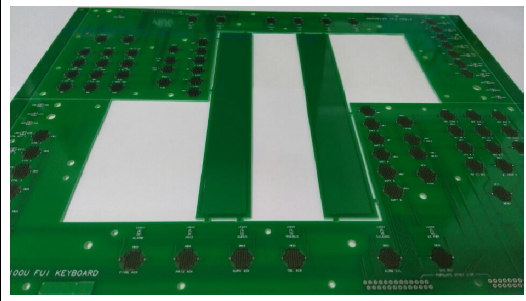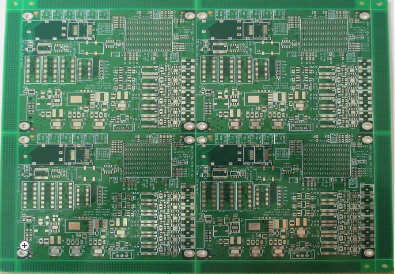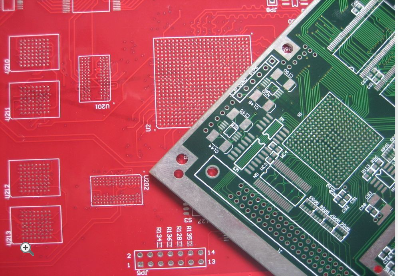-
 Agriculture
Agriculture
-
 Health-Care
Health-Care
-
 Environment
Environment
-
 Construction-Real-Estate
Construction-Real-Estate
-
 Tools-Hardware
Tools-Hardware
-
 Home-Garden
Home-Garden
-
 Furniture
Furniture
-
 Luggage-Bags-Cases
Luggage-Bags-Cases
-
 Medical-devices-Supplies
Medical-devices-Supplies
-
 Gifts-Crafts
Gifts-Crafts
-
 Sports-Entertainment
Sports-Entertainment
-
 Food-Beverage
Food-Beverage
-
 Vehicles-Transportation
Vehicles-Transportation
-
 Power-Transmission
Power-Transmission
-
 Material-Handling
Material-Handling
-
 Renewable-Energy
Renewable-Energy
-
 Safety
Safety
-
 Testing-Instrument-Equipment
Testing-Instrument-Equipment
-
 Construction-Building-Machinery
Construction-Building-Machinery
-
 Pet-Supplies
Pet-Supplies
-
 Personal-Care-Household-Cleaning
Personal-Care-Household-Cleaning
-
 Vehicle-Accessories-Electronics-Tools
Vehicle-Accessories-Electronics-Tools
-
 School-Office-Supplies
School-Office-Supplies
-
 Packaging-Printing
Packaging-Printing
-
 Mother-Kids-Toys
Mother-Kids-Toys
-
 Business-Services
Business-Services
-
 Commercial-Equipment-Machinery
Commercial-Equipment-Machinery
-
 Apparel-Accessories
Apparel-Accessories
-
 Security
Security
-
 Shoes-Accessories
Shoes-Accessories
-
 Vehicle-Parts-Accessories
Vehicle-Parts-Accessories
-
 Jewelry-Eyewear-Watches-Accessories
Jewelry-Eyewear-Watches-Accessories
-
 Lights-Lighting
Lights-Lighting
-
 Fabric-Textile-Raw-Material
Fabric-Textile-Raw-Material
-
 Fabrication-Services
Fabrication-Services
-
 Industrial-Machinery
Industrial-Machinery
-
 Consumer-Electronics
Consumer-Electronics
-
 Electrical-Equipment-Supplies
Electrical-Equipment-Supplies
-
 Electronic-Components-Accessories-Telecommunications
Electronic-Components-Accessories-Telecommunications
-
 Home-Appliances
Home-Appliances
-
 Beauty
Beauty
-
 Chemicals
Chemicals
-
 Rubber-Plastics
Rubber-Plastics
-
 Metals-Alloys
Metals-Alloys
- Masonry Materials
- Curtain Walls & Accessories
- Earthwork Products
- Fireproofing Materials
- Heat Insulation Materials
- Plastic Building Materials
- Building Boards
- Soundproofing Materials
- Timber
- Waterproofing Materials
- Balustrades & Handrails
- Bathroom & Kitchen
- Flooring & Accessories
- Tiles & Accessories
- Door, Window & Accessories
- Fireplaces & Stoves
- Floor Heating Systems & Parts
- Stairs & Stair Parts
- Ceilings
- Elevators & Escalators
- Stone
- Countertops, Vanity Tops & Table Tops
- Mosaics
- Metal Building Materials
- Multifunctional Materials
- Ladders & Scaffoldings
- Mouldings
- Corner Guards
- Decorative Films
- Formwork
- Building & Industrial Glass
- Other Construction & Real Estate
- Wallpapers/Wall panels
- HVAC System & Parts
- Outdoor Facilities
- Prefabricated Buildings
- Festive & Party Supplies
- Bathroom Products
- Household Sundries
- Rain Gear
- Garden Supplies
- Household Cleaning Tools & Accessories
- Lighters & Smoking Accessories
- Home Storage & Organization
- Household Scales
- Smart Home Improvement
- Home Textiles
- Kitchenware
- Drinkware & Accessories
- Dinnerware, Coffee & Wine
- Home Decor
- Golf
- Fitness & Body Building
- Amusement Park Facilities
- Billiards, Board Game,Coin Operated Games
- Musical Instruments
- Outdoor Affordable Luxury Sports
- Camping & Hiking
- Fishing
- Sports Safety&Rehabilitation
- Ball Sports Equipments
- Water Sports
- Winter Sports
- Luxury Travel Equipments
- Sports Shoes, Bags & Accessories
- Cycling
- Other Sports & Entertainment Products
- Artificial Grass&Sports Flooring&Sports Court Equipment
- Scooters
- Food Ingredients
- Honey & Honey Products
- Snacks
- Nuts & Kernels
- Seafood
- Plant & Animal Oil
- Beverages
- Fruit & Vegetable Products
- Frog & Escargot
- Bean Products
- Egg Products
- Dairy Products
- Seasonings & Condiments
- Canned Food
- Instant Food
- Baked Goods
- Other Food & Beverage
- Meat & Poultry
- Confectionery
- Grain Products
- Feminie Care
- Hair Care & Styling
- Body Care
- Hands & Feet Care
- Hygiene Products
- Men's Grooming
- Laundry Cleaning Supplies
- Travel Size & Gift Sets
- Room Deodorizers
- Other Personal Care Products
- Pest Control Products
- Special Household Cleaning
- Floor Cleaning
- Kitchen & Bathroom Cleaning
- Oral Care
- Bath Supplies
- Yellow Pages
- Correction Supplies
- Office Binding Supplies
- Office Cutting Supplies
- Board Erasers
- Office Adhesives & Tapes
- Education Supplies
- Pencil Cases & Bags
- Notebooks & Writing Pads
- File Folder Accessories
- Calendars
- Writing Accessories
- Commercial Office Supplies
- Pencil Sharpeners
- Pens
- Letter Pad/Paper
- Paper Envelopes
- Desk Organizers
- Pencils
- Markers & Highlighters
- Filing Products
- Art Supplies
- Easels
- Badge Holder & Accessories
- Office Paper
- Printer Supplies
- Book Covers
- Other Office & School Supplies
- Stationery Set
- Boards
- Clipboards
- Stamps
- Drafting Supplies
- Stencils
- Electronic Dictionary
- Books
- Map
- Magazines
- Calculators
- Baby & Toddler Toys
- Educational Toys
- Classic Toys
- Dress Up & Pretend Play
- Toy Vehicle
- Stuffed Animals & Plush Toys
- Outdoor Toys & Structures
- Balloons & Accessories
- Baby Food
- Children's Clothing
- Baby Supplies & Products
- Maternity Clothes
- Kids Shoes
- Baby Care
- Novelty & Gag Toys
- Dolls & Accessories
- Puzzle & Games
- Blocks & Model Building Toys
- Toddler Clothing
- Baby Clothing
- Kids' Luggage & Bags
- Arts, Crafts & DIY Toys
- Action & Toy Figures
- Baby Appliances
- Hobbies & Models
- Remote Control Toys
- Promotional Toys
- Pregnancy & Maternity
- Hygiene Products
- Kid's Textile&Bedding
- Novelty & Special Use
- Toy Weapons
- Baby Gifts
- Baby Storage & Organization
- Auto Drive Systems
- ATV/UTV Parts & Accessories
- Marine Parts & Accessories
- Other Auto Parts
- Trailer Parts & Accessories
- Auto Transmission Systems
- Train Parts & Accessories
- Universal Parts
- Railway Parts & Accessories
- Auto Brake Systems
- Aviation Parts & Accessories
- Truck Parts & Accessories
- Auto Suspension Systems
- Auto Lighting Systems
- New Energy Vehicle Parts & Accessories
- Auto Steering Systems
- Wheels, Tires & Accessories
- Bus Parts & Accessories
- Auto Performance Parts
- Cooling System
- Go-Kart & Kart Racer Parts & Accessories
- Air Conditioning Systems
- Heavy Duty Vehicle Parts & Accessories
- Auto Electrical Systems
- Auto Body Systems
- Auto Engine Systems
- Container Parts & Accessories
- Motorcycle Parts & Accessories
- Refrigeration & Heat Exchange Equipment
- Machine Tool Equipment
- Food & Beverage Machinery
- Agricultural Machinery & Equipment
- Apparel & Textile Machinery
- Chemical Machinery
- Packaging Machines
- Paper Production Machinery
- Plastic & Rubber Processing Machinery
- Industrial Robots
- Electronic Products Machinery
- Metal & Metallurgy Machinery
- Woodworking Machinery
- Home Product Manufacturing Machinery
- Machinery Accessories
- Environmental Machinery
- Machinery Service
- Electrical Equipment Manufacturing Machinery
- Industrial Compressors & Parts
- Tobacco & Cigarette Machinery
- Production Line
- Used Industrial Machinery
- Electronics Production Machinery
- Other Machinery & Industrial Equipment
- Camera, Photo & Accessories
- Portable Audio, Video & Accessories
- Television, Home Audio, Video & Accessories
- Video Games & Accessories
- Mobile Phone & Accessories
- Electronic Publications
- Earphone & Headphone & Accessories
- Speakers & Accessories
- Smart Electronics
- TV Receivers & Accessories
- Mobile Phone & Computer Repair Parts
- Chargers, Batteries & Power Supplies
- Used Electronics
- VR, AR, MR Hardware & Software
- Projectors & Presentation Equipments
- Other Consumer Electronics
- Cables & Commonly Used Accessories
- Computer Hardware & Software
- Displays, Signage and Optoelectronics
- Discrete Semiconductors
- Wireless & IoT Module and Products
- Telecommunications
- Connectors, Terminals & Accessories
- Development Boards, Electronic Modules and Kits
- Circuit Protection
- Sensors
- Isolators
- Audio Components and Products
- Integrated Circuits
- Power Supplies
- Relays
- RF, Microwave and RFID
- Electronic Accessories & Supplies
- Passive Components
- PCB & PCBA
- Air Quality Appliances
- Home Appliance Parts
- Heating & Cooling Appliances
- Small Kitchen Appliances
- Laundry Appliances
- Water Heaters
- Water Treatment Appliances
- Refrigerators & Freezers
- Personal Care & Beauty Appliances
- Major Kitchen Appliances
- Cleaning Appliances
- Second-hand Appliances
- Smart Home Appliances
- Other Home Appliances
- Energy Chemicals
- Inorganic Chemicals
- Basic Organic Chemicals
- Agrochemicals
- Admixture & Additives
- Catalysts & Chemical Auxiliary Agents
- Pigments & Dyestuff
- Coating & Paint
- Daily Chemicals
- Polymer
- Organic Intermediate
- Adhesives & Sealants
- Chemical Waste
- Biological Chemical Products
- Surface Treatment Chemicals
- Painting & Coating
- Chemical Reagents
- Flavor & Fragrance
- Non-Explosive Demolition Agents
- Other Chemicals
- Custom Chemical Services
High Frequency RF Mixed Pressure PCB Board With Low Loss Design
In the rapidly advancing world of wireless communication and high-speed electronics, the demand for reliable and efficient printed circuit boards (PCBs) has never been greater. High Frequency RF Mixed Pressure PCB Board With Low Loss Design represents a cutting-edge solution tailored for applications where signal integrity, minimal loss, and thermal management are paramount. This specialized PCB technology integrates mixed dielectric materials under controlled pressure lamination processes to achieve superior performance in high-frequency environments, such as 5G infrastructure, aerospace systems, radar, and satellite communications. As data rates continue to soar and devices operate at higher frequencies, traditional PCBs often fall short due to excessive signal attenuation and interference. Thus, this innovative design not only captures the interest of engineers and designers but also sets a new benchmark for achieving low loss and high reliability in demanding RF applications, providing a crucial foundation for next-generation electronic systems.
Material Selection and Dielectric Properties
The foundation of a High Frequency RF Mixed Pressure PCB Board lies in the careful selection of materials with optimal dielectric properties. These boards typically employ low-loss laminates, such as PTFE-based substrates or ceramic-filled composites, which exhibit a low dielectric constant (Dk) and dissipation factor (Df). For instance, materials like Rogers RO4000 series or Taconic RF-35 are favored for their stability across a wide frequency range, reducing signal loss and phase distortion. The mixed pressure aspect involves combining different dielectric layers to balance performance metrics, such as thermal conductivity and mechanical strength, ensuring that the PCB can handle high-power RF signals without degradation.
Moreover, the dielectric constant consistency is critical to maintain impedance matching, which minimizes reflections and maximizes power transfer. Advanced material engineering allows for tailored properties, such as controlled thermal expansion coefficients, to prevent delamination or cracking under thermal stress. By leveraging these specialized materials, designers can achieve a board that not only supports high-frequency signals up to millimeter-wave ranges but also maintains low insertion loss, essential for applications like phased array antennas or high-data-rate transceivers.
Lamination Process and Structural Integrity
The lamination process in High Frequency RF Mixed Pressure PCBs is a meticulously controlled procedure that differentiates it from standard multilayer boards. It involves applying varying pressures and temperatures during bonding to accommodate the diverse dielectric materials used, preventing voids or inconsistencies that could impair signal integrity. This mixed pressure approach ensures that layers with different thermal and mechanical properties are uniformly integrated, enhancing the overall structural robustness of the PCB.
Key to this process is the use of pre-preg materials compatible with the core substrates, which are carefully aligned to avoid misregistration that might cause impedance variations. Advanced techniques, such as sequential lamination or vacuum-assisted pressing, are employed to eliminate air traps and ensure dense, homogenous layer stacking. This results in a board that can withstand harsh environmental conditions, including thermal cycling and mechanical vibrations, while maintaining electrical performance. The outcome is a high-reliability PCB capable of enduring the rigors of aerospace or automotive applications, where failure is not an option.
Design Considerations for Low Loss Performance
Achieving low loss in High Frequency RF Mixed Pressure PCBs requires meticulous design strategies focused on minimizing signal attenuation. This begins with precise impedance control, where trace widths, spacing, and layer stack-up are optimized using electromagnetic simulation tools to match the characteristic impedance of the system, typically 50 or 75 ohms. The use of smooth copper foils with low surface roughness reduces skin effect losses at high frequencies, as smoother surfaces decrease conductor loss, which becomes significant above 1 GHz.
Additionally, the layout must account for parasitic effects, such as capacitance and inductance, by avoiding sharp bends in traces and implementing grounded coplanar waveguides or microstrip lines. Thermal management is integrated into the design through the strategic placement of thermal vias and heat sinks, dissipating heat generated by active RF components to prevent performance drift. By incorporating these elements, designers can achieve insertion losses as low as 0.5 dB per inch at 10 GHz, making these boards ideal for high-efficiency systems like base stations or medical imaging devices.
Applications and Future Trends
High Frequency RF Mixed Pressure PCB Board With Low Loss Design finds extensive applications across industries where high-speed, low-loss signal transmission is critical. In telecommunications, it enables the deployment of 5G networks by supporting millimeter-wave frequencies with minimal attenuation, facilitating faster data rates and reduced latency. The aerospace and defense sectors rely on these PCBs for radar systems, electronic warfare, and satellite communications, where reliability and performance under extreme conditions are non-negotiable.
Looking ahead, emerging trends such as the Internet of Things (IoT), autonomous vehicles, and advanced wireless sensors will drive further innovation in this technology. Future developments may involve the integration of embedded active components or the use of novel materials like liquid crystal polymer (LCP) to achieve even lower losses and higher frequency capabilities. As the industry moves toward terahertz applications, this PCB design will continue to evolve, playing a pivotal role in shaping the next wave of electronic advancements and ensuring seamless connectivity in an increasingly wireless world.
REPORT































































































































































































































































































































































































































































































































































































